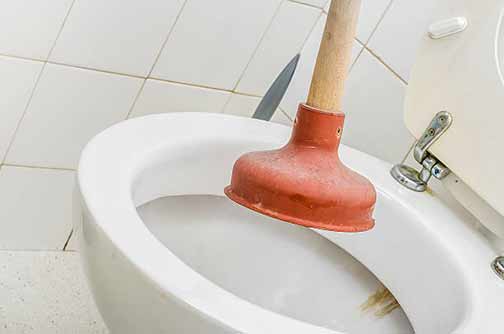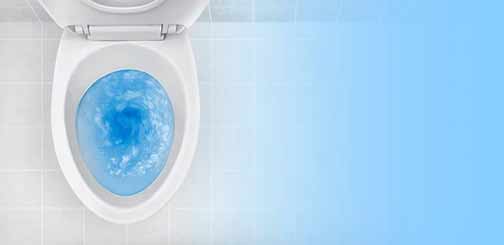Understanding the Situation: The Importance of Acting Fast
When something gets flushed down the toilet accidentally, it can be a worrisome and stressful experience. Understanding that time is of the essence is critical. The faster you act, the higher the chances of recovering the flushed item and avoiding potential damage to your plumbing system. Here we will explain why prompt action is essential and what initial steps you should take.
Identify the Flushed Item
The first step in dealing with a flushed item is to determine what exactly has been flushed. Items such as jewelry, toys, tissues, or electronics require different approaches for retrieval and have different implications for your plumbing health. Identifying the item will guide you in choosing the appropriate recovery method.
Immediate Actions to Prevent Further Damage
After identifying the item, it is crucial to take immediate steps to prevent it from moving further down the plumbing system. Here’s what you can do right away:
- Stop Using the Toilet: Any further use of the toilet can push the item further down the drain, making retrieval more difficult and possibly causing a blockage.
- Turn Off Water Supply: Locate and turn off the water valve behind the toilet. This prevents additional water from flowing into the toilet bowl.
Attempting Retrieval: Simple Tools and Techniques
Certain items can be retrieved using basic household tools. Depending on the nature of the object, you might consider the following methods:
- Plunger: This tool can create suction that might help bring the object closer to the bowl for easy removal.
- Wire Hanger: A straightened wire hanger can be used to fish out the item by gently probing it down the toilet drain.
- Wet-Dry Vacuum: If the item is not very far down, a wet-dry vacuum can sometimes pull it back up through the toilet.
Using Plumbing Augers: A More Advanced Option
For items stuck further down the pipes, a plumbing auger might be necessary. Plumbing augers are designed to navigate through the plumbing system and can reach and retrieve or dislodge items causing blockages. Here’s how you can use a plumbing auger:
- Insert the Auger: Feed the auger into the toilet bowl and turn the handle to extend it down the drain.
- Navigate and Retrieve: Carefully maneuver the auger until it reaches the blockage. Gently pull the auger back, trying to bring the item with it.
Knowing When to Call a Professional
In some cases, retrieving the flushed item may require professional assistance, especially if:
– The item is deeply lodged in the plumbing system.
– Your efforts to retrieve it have been unsuccessful.
– You are unsure or uncomfortable handling the tools needed.
Professional plumbers have specialized drain tools and expertise to handle such situations without causing further damage to your plumbing. Do not hesitate to seek help.
Preventing Future Incidents
Prevention is better than cure. Taking measures to ensure that only appropriate items are flushed and minimizing the risk of accidental flushes can save you from future headaches. Consider the following preventative measures:
- Install Toilet Lid Locks: Especially if you have children, toilet lid locks can prevent unnecessary flushes of toys and other items.
- Educate Household Members: Make sure everyone in the home knows what should and shouldn’t be flushed down the toilet.
- Keep the Bathroom Organized: Keeping the bathroom clutter-free reduces the chances of items falling into the toilet accidentally.

The Role of Preventive Plumbing Inspection
Regular plumbing inspections can help identify potential problems before they become serious. If you’ve experienced flushed items in the past, a preventive inspection could be beneficial to ensure your plumbing system remains in optimal condition. During these inspections, a plumber can:
- Check for Blockages: Identify and clear any developing obstructions in the plumbing.
- Assess Overall Health: Ensure your plumbing system is in good working order and recommend any necessary maintenance.
Understanding the Consequences of Ignoring the Issue
Ignoring a flushed item can lead to severe consequences, including:
- Persistent Blockages: Gradual build-up around the flushed item can lead to complete blockages.
- Water Damage: Overflow from blockages can cause significant water damage to flooring and other structures.
- Expensive Repairs: Ignoring the issue often leads to more extensive, and costly, plumbing repairs.
The Psychological Impact and How to Deal With It
Experiencing a flushed item down the toilet can be more than just an inconvenience. It can lead to anxiety, stress, and frustration. Here are ways to cope with the situation:
- Stay Calm: Panicking can lead to hasty decisions that might worsen the situation.
- Ask for Help: Don’t be afraid to seek assistance from family members or professionals.
- Learn from the Experience: Use this as a learning experience to be more cautious in the future.
Accidentally flushing something down the toilet is a situation best handled with swift and appropriate actions. By identifying the flushed item, using suitable tools for retrieval, knowing when to call a professional plumber, and taking preventive measures, you can manage the incident effectively.
Also, understanding the implications of delays and ignorance will help you appreciate the urgency of the matter. Remember, vigilance and preparedness are key to maintaining a healthy plumbing system and a stress-free home environment.


